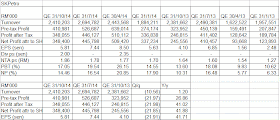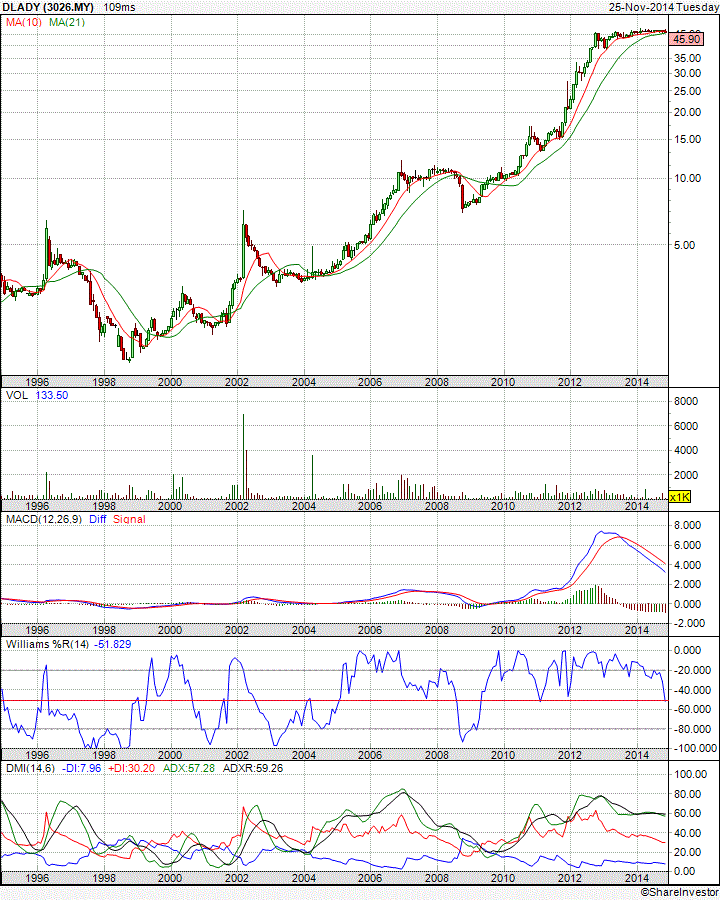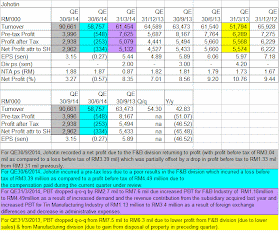Results Update
For QE31/10/2014, SKPetro's net profit increased by 42% y-o-y to RM348 million while revenue increased marginally by 1% to RM2.41 billion. Compared to the immediate preceding quarter, QE31/7/2014, net profit dropped by 22% while revenue declined by 11%.
 Table 1: SKPetro's last 8 quarterly results
Table 1: SKPetro's last 8 quarterly results
The y-o-y improvement in bottom-line was attributed to higher contribution from the Drilling & Energy Services ("DES') segment, which experienced a 34%-increase in revenue. This increased revenue offset the drop in revenue from the Offshore Construction & Subsea Services ('OCSS') segment.
The q-o-q decline in bottom-line was attributed to drop in earning by all segments, especially the DES & OCSS segments. These 2 segments experienced lower revenue of 5% & 26%, respectively.
 Table 1: SKPetro's segmental results
Table 1: SKPetro's segmental results
 Chart 1: SKPetro's last 10 quarterly results
Financial Position
Chart 1: SKPetro's last 10 quarterly results
Financial Position
As at 31/10/2014, SKPetro's financial position is deemed acceptable, with adequate liquidity albeit slightly elevated leverage. Its current ratio stood at 1.2 times while gearing ratio stood at 1.9 times. Gearing ratio is defined as Total Liabilities over Total Equity. However, if you used Total Borrowings over Total Equity to calculate gearing ratio, then that number would be 1.4 times.
Valuation
SKPetro (closed at RM2.45 yesterday) is now trading at a trailing PE of 8.9
times
(based on last 4 quarters' EPS of 27.4 sen). This low PE multiple seems to suggest that SKPetro's earning going forward would drop sharply in line with lower crude oil prices. If this negative scenario does not pan out, then the earning decline would be less and the share price could recover.
Technical Outlook
SKPetro broke its uptrend line at RM4.20 in September. At RM2.45, SKPetro is now trading near its initial quoted prices of RM2.20.
 Chart 2: SKPetro's weekly chart as at Dec 9, 2014 (Source: Share Investors)
Chart 2: SKPetro's weekly chart as at Dec 9, 2014 (Source: Share Investors)
Conclusion
Based on good financial performance & attractive valuation, SKPetro is a good stock to consider for
long-term investment, especially after its recent sharp selldown. However, the low prices may persist for a while due to poor technical outlook and depressed prices for crude oil.
Note:
In
addition to the disclaimer in the preamble to my blog, I hereby confirm
that I do not have any relevant interest in, or any interest in
the acquisition or disposal of, SKPetro.
















































